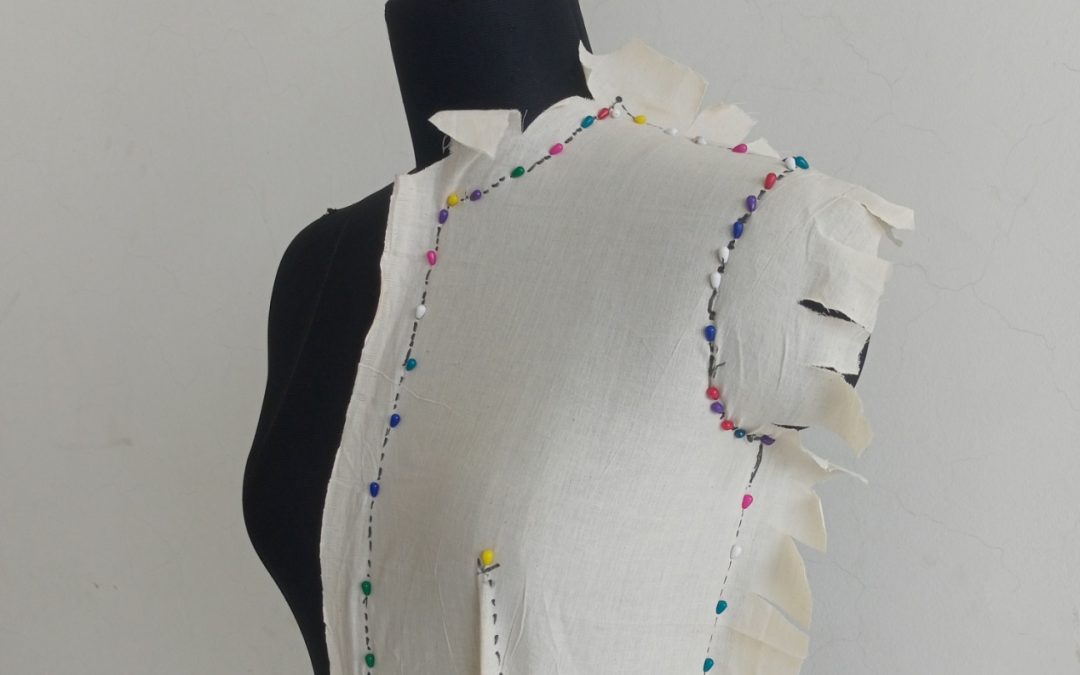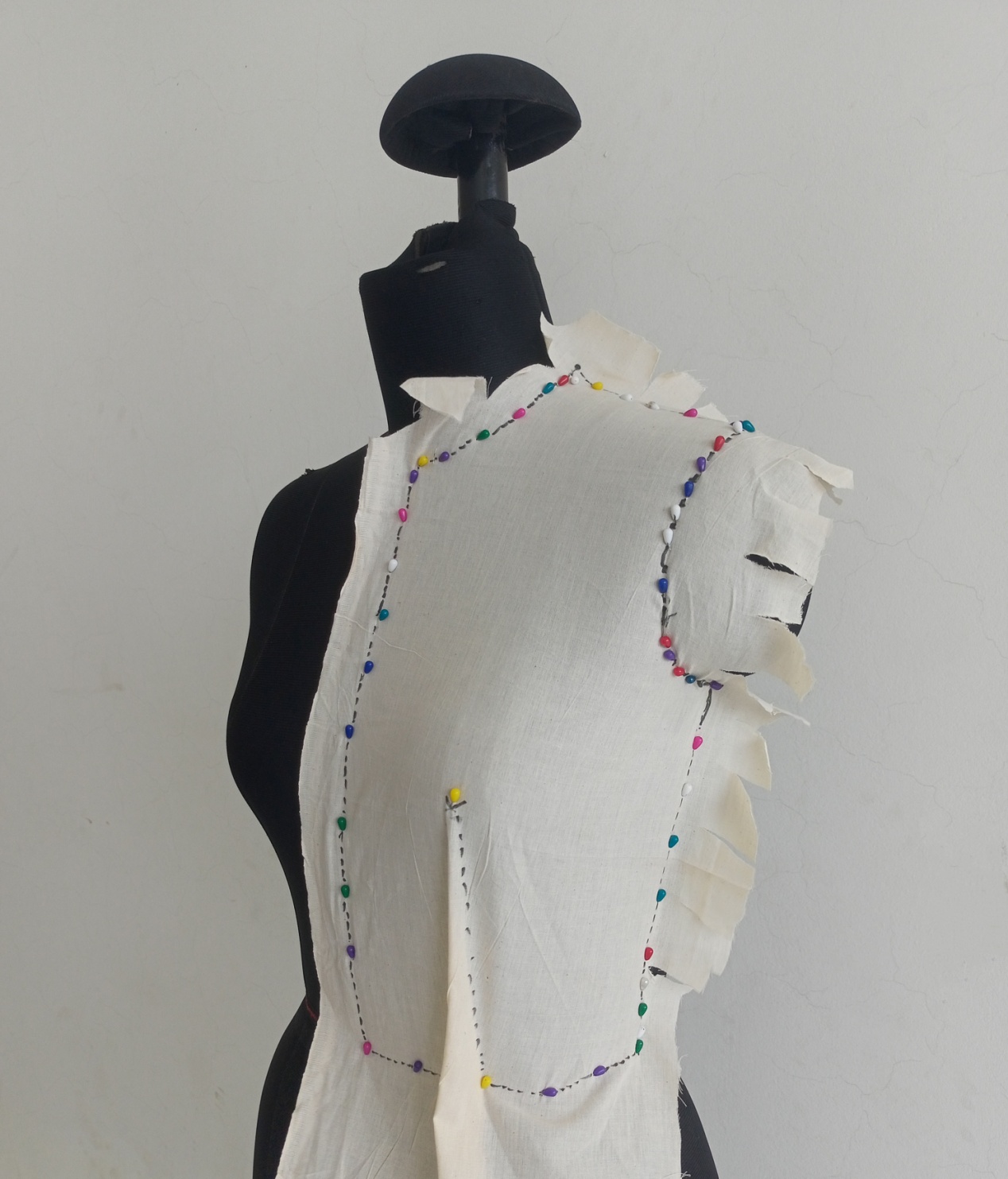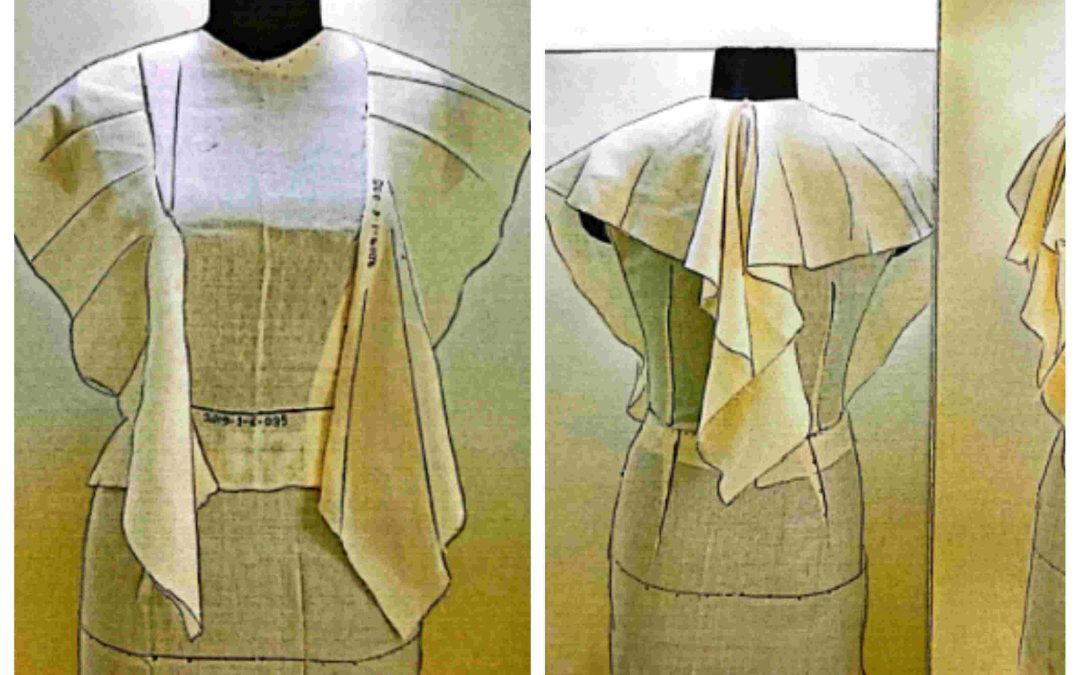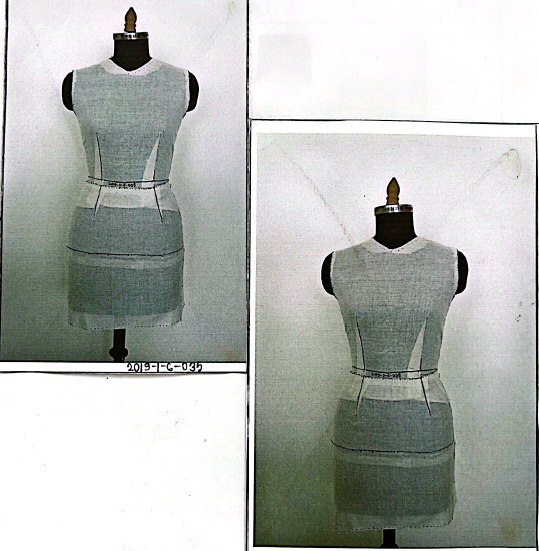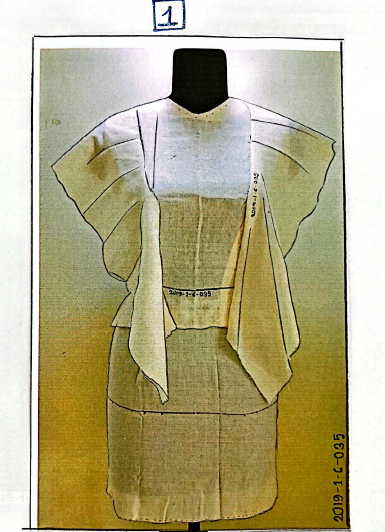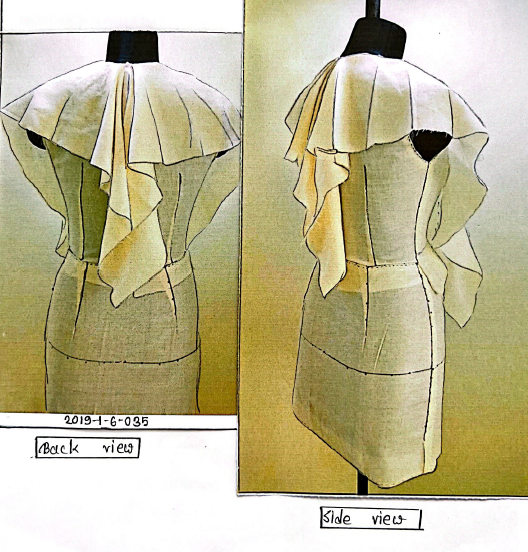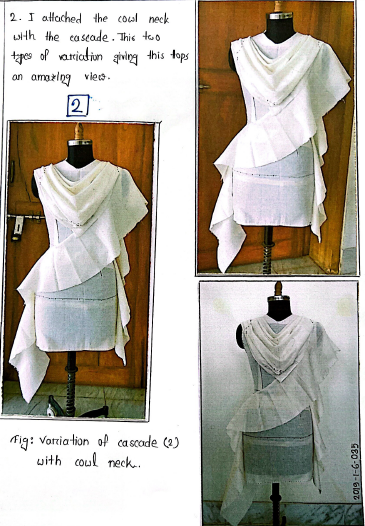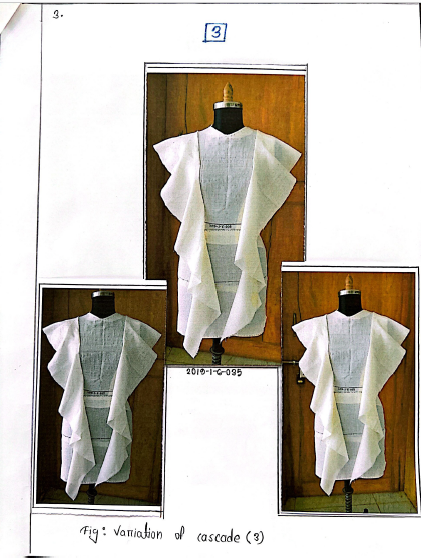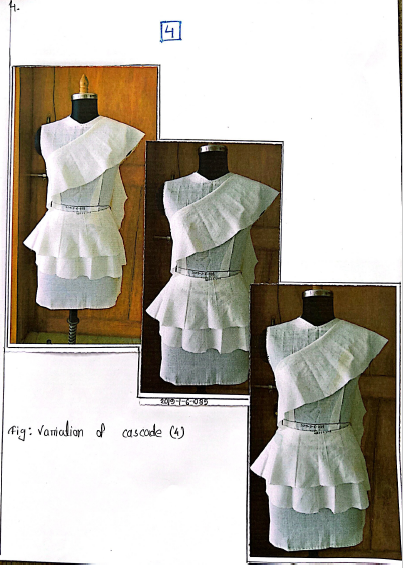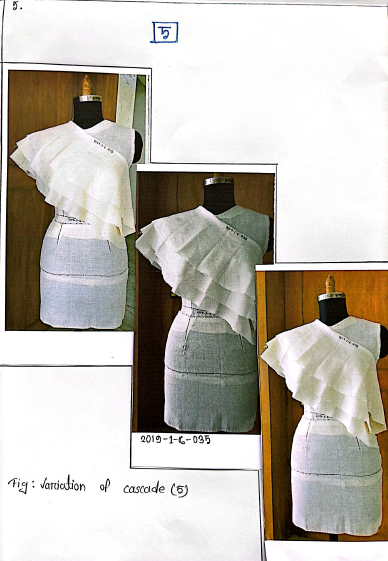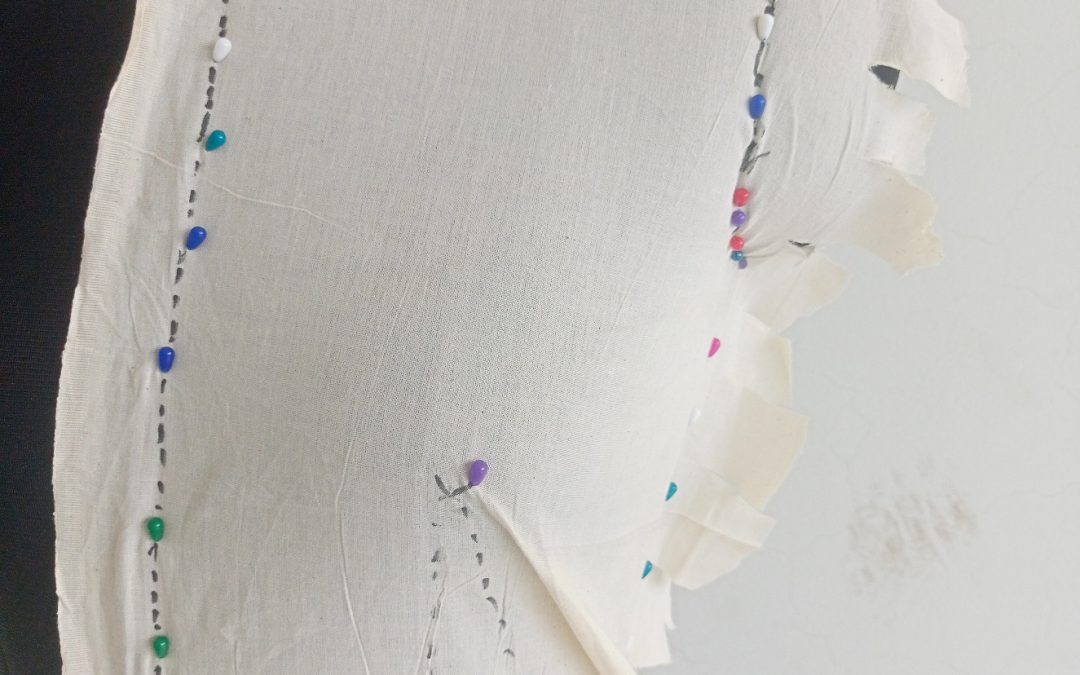
Study on Dart Variation-Fashion Draping Experiment: 2
Draping practicals are carried on in Level: 3, Term: 2 of the Department of Textile Fashion and Design (DoTFD) students’ academic life. In the practical classes they go through the theoretical ideas and then apply them practically on the dress making forms. Study on dart variation is the second. lesson that the students experiment on their lab.
Shariful Islam Akash is now a Level: 4, Term: 1 student and he has done several experiments on fashion draping.
In this series, we are going to cover his experiments done in the Fashion Draping lab with necessary pictures for your reference and easy understanding.
What is dart?
In the realm of fashion design, a “dart” serves as a pivotal technique employed in the structuring of dress patterns. It operates as a strategic folding and stitching mechanism that facilitates the adaptation of flat fabric into garments that can gracefully contour to the body’s shape.
Imagine a triangle skillfully integrated within the fabric’s expanse. This triangular configuration involves three key points: a broader base and two narrower apex points. When these points are deftly aligned and sewn, the fabric takes on a sculpted form, accommodating curves and creating a tailored appearance.
Following the stitching process, any excess fabric is meticulously trimmed away. The remaining fabric is then smoothed out through careful pressing, allowing it to conform to the body’s natural curves. This maneuver ensures a snug fit that is both flattering and comfortable.
Darts exhibit versatility in their design, ranging from straightforward single-point variations to more intricate double-point or curved iterations. Despite these variations, the primary objective of darts remains constant: to merge fabric and form, resulting in attire that accentuates the body’s attributes while offering a polished aesthetic.
What is Dart Variation?
“Dart variation” refers to the diverse range of alterations and modifications that can be applied to the standard dart technique in garment construction and pattern making. Darts are typically used to shape fabric and garments to better fit the contours of the body, but variations on the traditional dart can be employed to achieve specific design effects, enhance comfort, or accommodate unique body shapes.
There are several types of dart variations, each serving a distinct purpose:
- Double-point Dart: This involves the incorporation of two darts that originate from a common point but diverge in opposite directions. It is commonly used to provide additional shaping in areas like the bust, waist, or hips.
- Curved Dart: A curved dart follows a gently curved seamline, as opposed to the straight lines of a traditional dart. This is often used to create more natural and subtle shaping, particularly when darts are placed in areas with more complex curves.
- Tuck or Pleat Dart: Instead of folding and stitching the fabric, a tuck or pleat is created by folding the fabric and securing it with stitches. This can add volume and dimension to a garment while still achieving some degree of shaping.
- Decorative Dart: Sometimes darts are placed not just for functional reasons but also for decorative purposes. In this case, they might not necessarily serve a shaping role but rather contribute to the overall aesthetic of the garment.
- French Dart: This variation starts from the side seam and curves up toward the bust point. It’s often used in bodices to create a flattering fit and shaping around the bust area.
- Princess Seam: While not a traditional dart, princess seams are dart-like seams that run vertically over the front and/or back of a garment. They are used for shaping and can provide a slimming effect along with a more elegant visual appeal.
These variations illustrate the creative possibilities within the realm of garment design and construction. Designers and dressmakers use these techniques to tailor clothing to specific body types, enhance aesthetics, and push the boundaries of conventional garment construction.
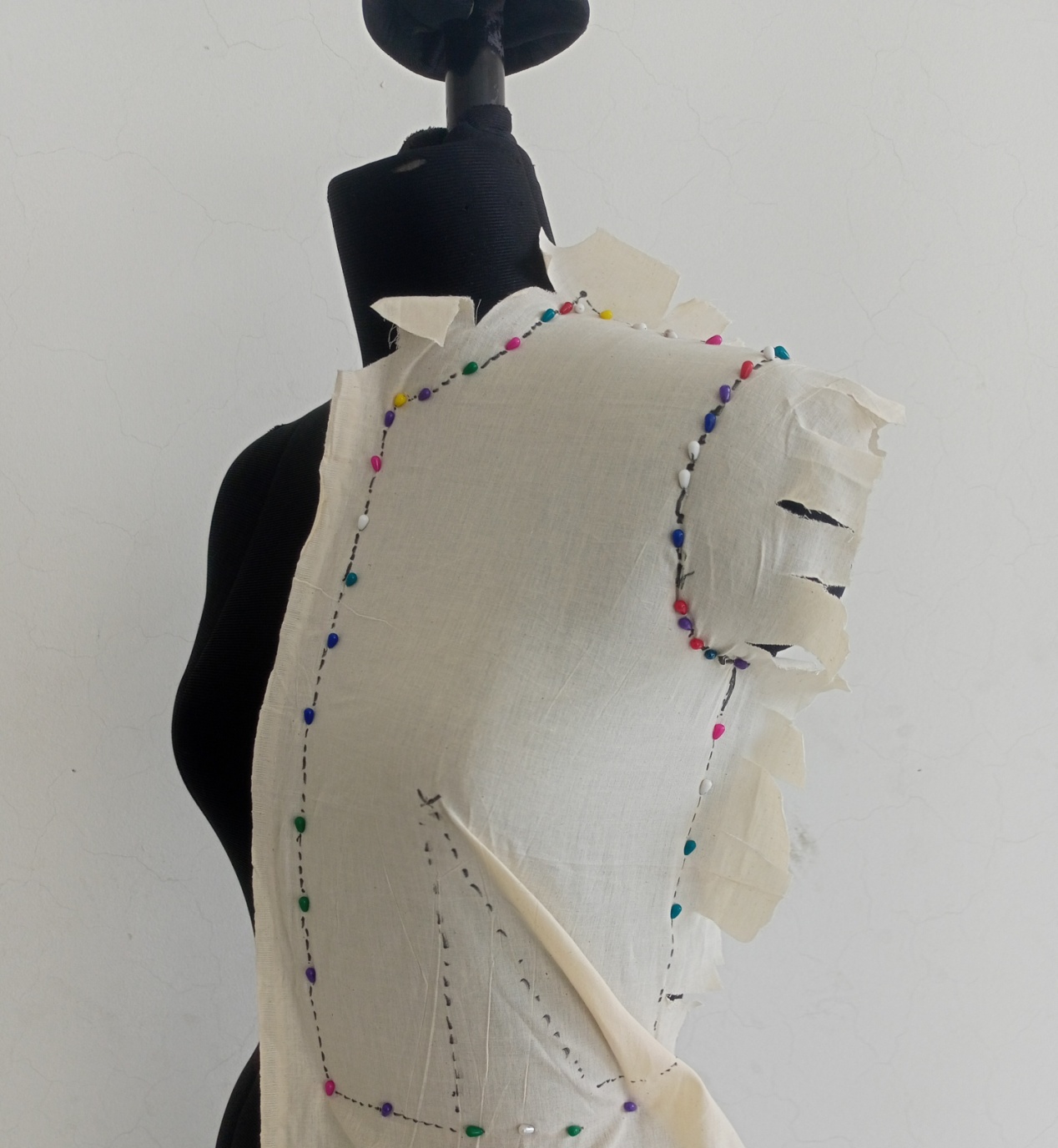
Figure 2: Dart variation of Basic Bodice (waist line)
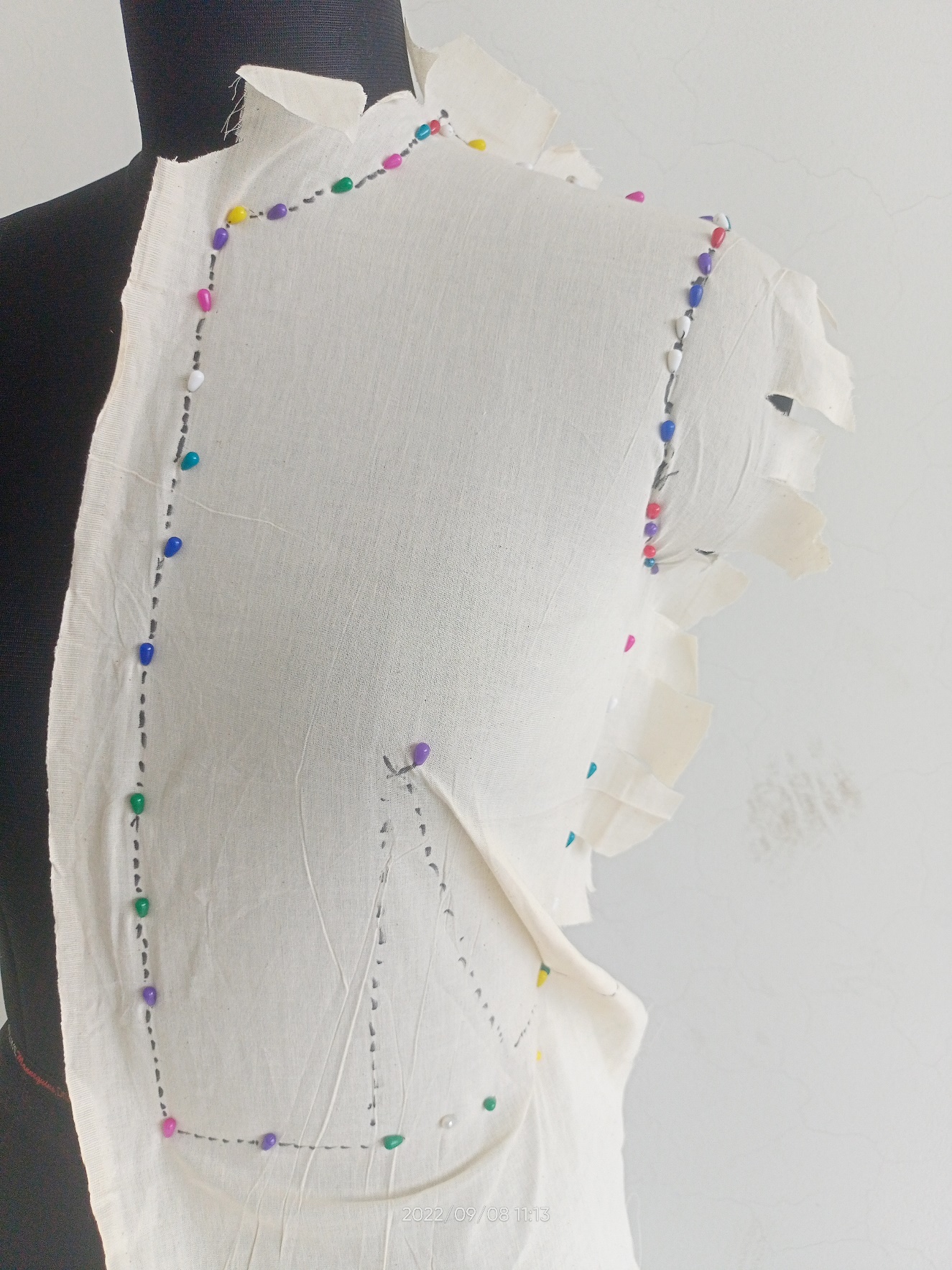
Figure 3: Dart variation of Basic Bodice (French)
Working Procedure for the study on dart variation:
- In Basic Bodies pattern dart was placed alongside princess line. For dart variation we can shift that dart line into different directions such as: Armhole, Side seam, Center lines, Shoulder, Neckline and Waistline etc.
- Here a dart manipulation was done in the direction of side seam.
- The pin from the basic bodies dart placed along with princess line are opened and the waist line was straightened. Then pins are placed from dirt point to the Side Seam which was on the waist line. Pins are placed both sides of the dirt to identify dart line.
- Thus by changing position maintaining fixed Bust point and Dart point, Dart manipulation is done.
Md. Shariful Islam Akash
Department of Textile Fashion and Design, Batch: 45
Bangladesh University of Textiles (BUTEX)
You can also read other articles of this author by going here!
Medieval Period (Part 1)-Sociopolitical System & women’s clothing
You can read the author’s other fashion draping experiments from the following links:
Study on Draping of Basic Bodice-Fashion Draping Experiment Number:1
You can read another draping experiment on variation of cascade by clicking this link.
If you want to partner with us, collaborate, write articles or simply want to contact, feel free to email us at: fashionnovationfd@gmail.com
We always check your emails!

